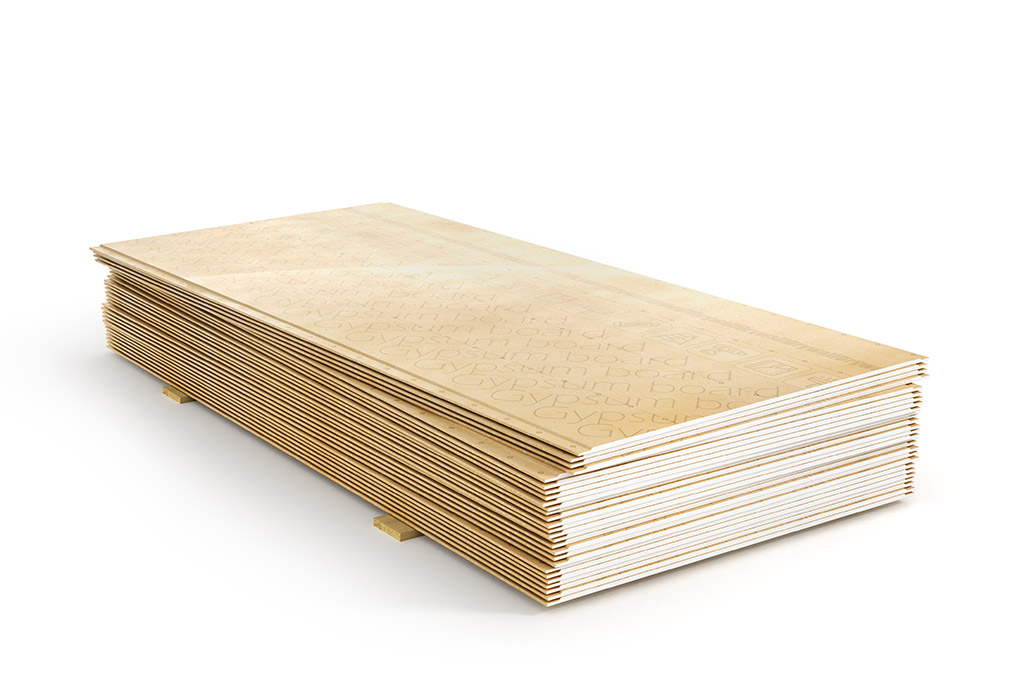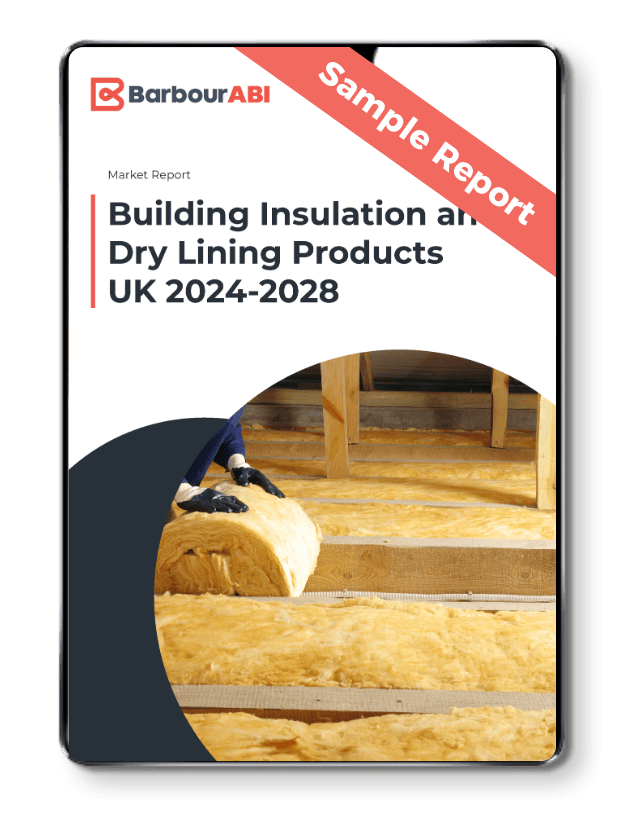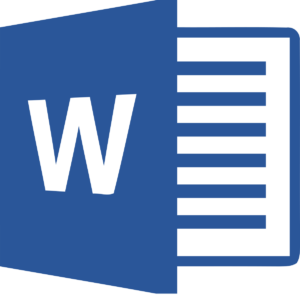Building Boards Market Report UK 2018-2022
Available as an Instant Download PDF
This 2nd edition of the Building Boards Market Report provides an analysis of demand and supply of building boards used in building fabric applications, including; drylining, polymer insulation & specialist building boards (rainscreen cladding, timber frame sheathing, tile backing, renders etc).
£700.00 Exc. VAT
This 2nd edition of the ‘Building Boards Market Report – UK 2018-2022’ provides an analysis of demand and supply of building boards used primarily in building fabric applications, including; drylining, polymer insulation and specialist building boards (used e.g. for rainscreen cladding, timber frame sheathing, tile backing, renders etc).
Key content covered in the report
- Detailed assessment of recent market trends – and forecasts of market development to 2022.
- Market size, product analysis, market drivers, key suppliers.
- Analysis by product group – product mixes for:
- Standard & performance plasterboards
- Rigid polymer insulation boards
- Specialist boards (e.g. calcium silicate, magnesium oxide, fibre cement)
- Analysis by application – assessment of key applications and end use sectors for: drylining, building insulation, fire protection, laminate flooring underlay, cladding, tile backing, timber frame sheathing etc.
Areas of particular interest
- Review of market sizes for standard and performance plasterboards, rigid polymer insulation boards and specialist building boards.
- Reviews of key applications e.g. drylining, thermal insulation, tile backing, fire protection, timber frame sheathing, external applications etc.
- Changing mix of different material types of insulation products.
- Reviews of key manufacturers, importers and distributors in the UK building boards market.
Some of the companies included:
BBS Facades, British Gypsum, CCF, Cellecta, Celotex, Dow Building Solutions, Ecological Building Systems, EcoTherm Insulation UK, Encon Insulation, Etex Building Performance, Euroform Products, Fermacell Ltd, FGF Ltd, Fibo Wall Panels, Jablite, Jackon UK Ltd, James Hardie Building Products, Kingspan Insulation, Knauf UK GmbH, Marley Eternit, Marmox UK, Minster Insulation, Omnis Exteriors, Pittsburgh Corning UK, Cembrit, Promat UK, ProWarm, Ravatherm UK, Recticel Insulation Products, Resistant Building Products, Rockpanel, Roofing and Cladding Materials (RCM), Schlüter Systems Ltd, SIG plc, Siniat UK, Trespa UK, Trimline Group, Vita Cellular Foams (VCF), Vivalda, Wedi Systems UK, Xtratherm UK, Yorkshire Plywood and more.
Market Performance
- Definitions for market, products and applications – excluding timber boards (plywood, OSB etc), worktops, washroom panel systems.
- Overall market size, drivers & trends 2012-2017 and forecasts to 2022 – general construction & housebuilding output, home improvement output, building regulations & legislation, skills issues.
Market Mix By Product/Materials
- Overview and share mix between rigid polymer insulation boards, plasterboards and specialist boards e.g. fibre cement, calcium silicate, magnesium oxide etc.
- Rigid polymer insulation boards – polyisocyanurate, extruded polystyrene and phenolic foam; market size and trends 2012-2017 & forecasts to 2022. Mix by material type by value. Key suppliers and main products.
- Standard & performance gypsum plasterboards; market size and trends 2012-2017 & forecasts to 2022. Mix by type by value and by volume. Key suppliers and main products.
- Specialist building boards e.g. fibre cement, calcium silicate, magnesium oxide, polymer (non-insulation). Market size and trends 2020-2017 & forecasts to 2022. Mix by type by value and by volume. Key suppliers and main products.
Applications
- Drylining and permanent partitioning – walls, ceiling & permanent partitions. Market size, trends, market mix by application and key suppliers.
- Thermal insulation – walls, floors, roofs, basements and other. Market size, trends, key suppliers.
- Passive fire protection – structural steel and building fabric. Market size, trends, key suppliers.
- Sheathing – for timber & light steel framing and external wall insulation systems. Market size, trends, key suppliers.
- Flooring – XPS underlay boards for laminate flooring. Market size, trends, key suppliers.
- Cladding -fibre cement, HPL & calcium silicate boards. Market size, trends, key suppliers.
Supply and Distribution Review
- Plasterboard- estimated market shares and review of suppliers – manufacturers profiles.
- Polymer boards – estimated market shares and review of suppliers – key manufacturers profiles.
- Specialist building boards – review of suppliers – key manufacturers profiles.
- Supply chain review – estimated distribution mix e.g. specialist distributors, builders’ merchants, direct to OEM etc.
- Distributor review – channel shares, company profiles.
This report assesses the market for manufactured board products used on both internal and external building works, focusing on those with higher performance properties relating to thermal insulation, fire protection, moisture and impact resistance. The types of building boards covered in this report are as follows. Rigid and semi-rigid polymer boards -mainly for thermal insulation, but also niche applications such as laminate flooring underlay. Gypsum plasterboards – mainly for drylining and permanent partitions. Specialist (building) boards – made from range of materials and used in broad range of internal and external applications. Not included are standard boards of plywood, particleboard and OSB, nor decorative panels used for applications such as washroom cubicles.
2017 has seen some slowing of growth in construction activity leading to more modest growth in the building boards market. This follows the building boards market showing substantial recovery from the economic recession that followed the financial crisis of 2007/8, with particularly rapid growth between 2013 and 2016. Demand for building boards is primarily driven by developments in new housing, commercial newbuild and, to a lesser extent, domestic extensions & loft conversions and non-domestic refurbishment.
Other factors driving growth are the trend towards specifying more value-added, higher performance, products in preference to standard alternatives and the increasing use of newer methods of accelerated construction, including timber frame building and offsite modular construction, which favour the use of higher performance insulation, lining or sheathing boards.
Going forward, forecasts are for steady growth through to 2022, reflecting modest forecast growth in the construction industry overall, though the impacts from political or economic events, particularly those relating to the UK’s departure from the EU, mean that the prospects for construction output remain clouded by uncertainty.
Contents Listing
- 1. INTRODUCTION 6
- 1.1 BACKGROUND 6
- 1.2 SOURCES OF INFORMATION 6
- 2. SUMMARY 8
- 3. ECONOMIC ENVIRONMENT 10
- 3.1 GDP 10
- 3.2 INFLATION & INTEREST RATES 11
- 3.3 UNEMPLOYMENT 12
- 3.4 HOUSEHOLD CONSUMPTION 13
- 3.5 HOUSING & CONSTRUCTION 13
- 3.6 STERLING 14
- 3.7 POPULATION PROFILE 14
- 3.8 CONCLUSIONS 15
- 4. MARKET SIZE AND TRENDS 16
- 4.1 DEFINITION 16
- 4.2 MARKET OVERVIEW 16
- 4.3 HOUSING MARKET 18
- 4.4 NON-RESIDENTIAL CONSTRUCTION 22
- 4.5 OFFSITE CONSTRUCTION 23
- 4.6 REGULATORY AND LEGISLATIVE INFLUENCES 25
- 4.7 SKILLS SHORTAGES AND REQUIREMENTS 28
- 5. MARKET MIX BY CORE MATERIAL TYPE 29
- 5.1 DEFINITION AND OVERVIEW 29
- 5.2 RIGID POLYMER THERMAL INSULATION BOARDS 30
- 5.3 CALCINED GYPSUM PLASTERBOARDS 32
- 5.4 SPECIALIST BUILDING BOARDS 36
- 5.4.1 General overview 36
- 5.4.2 Cement boards 37
- 5.4.3 Calcium Silicate boards 38
- 5.4.4 Composite Boards 39
- 5.4.5 Other (including magnesium oxide boards) 40
- 6. MARKET MIXES BY APPLICATION 41
- 6.1 DEFINITION 41
- 6.2 LININGS FOR WALLS, PARTITIONS AND CEILINGS 41
- 6.3 THERMAL INSULATION BOARDS 42
- 6.4 SHEATHING BOARDS (INCLUDING RENDER CARRIER BOARDS) 42
- 6.5 TILE BACKER BOARDS 44
- 6.6 FIRE PROTECTION 46
- 6.7 CLADDING 48
- 6.8 LAMINATE FLOORING 50
- 7. SUPPLIERS REVIEW 52
- 7.1 PLASTERBOARDS /DRYLINING 52
- 8. DISTRIBUTION 57
- 8.1 OVERVIEW 57
- 8.2 COMPANY PROFILES 58
- 8.2.1 Specialist distributors 58
- 8.2.2 Builders Merchants 59
- 8.2.3 DIY and Direct Sales 60
Tables and Charts
- CHART 1: UK BUILDING BOARDS MARKET SIZE AND FORECASTS (DRYLINING, RIGID POLYMER & SPECIALIST BOARDS) 2012 – 2022 8
- TABLE 2: GDP DATA – 2015-2017 – KEY CONSTITUENT ELEMENTS 10
- CHART 3: INTEREST RATES AND INFLATION (CPI) FROM 2000-2022 12
- CHART 4: PDI & SAVINGS RATIO AT CURRENT PRICES 2000-2022 13
- TABLE 5: EXCHANGE RATE FLUCTUATIONS 2014-2020 – STERLING TO THE DOLLAR, AND THE EURO, SPOT RATES 14
- CHART 6: TOTAL UK BUILDING BOARDS MARKET (RIGID POLYMER, PLASTERBOARDS AND SPECIALIST BUILDING BOARDS) BY VALUE (£ MILLION MSP) 2012 – 2022 17
- CHART 7: NEW HOUSING STARTS / COMPLETIONS 2012-21 GREAT BRITAIN – VOLUME OF DWELLINGS (‘000S) 18
- CHART 8: HOUSEBUILDING COMPLETIONS IN ENGLAND – % MIX BY TYPE OF DWELLING (FLATS VERSUS HOUSES) 2012-2018 19
- TABLE 9: NUMBER OF HOUSEHOLDER DEVELOPMENTS GRANTED IN GREAT BRITAIN 2012-2021 20
- TABLE 10: MIX OF HOUSEHOLDER DEVELOPMENTS BY TYPE OF PROJECT (VOLUME – EXTENSIONS, ROOFING, H&V, ETC) 2016 20
- CHART 11: MIX OF EXTERNAL BUILDING ALTERATIONS BY TYPE BY NUMBER OF APPLICATIONS GRANTED (OUTBUILDINGS, CLADDING, INSULATION, ETC.) 21
- TABLE 12: TOTAL CONSTRUCTION OUTPUT BY VALUE (£ BILLION AT CURRENT PRICES) 2012-2021 22
- CHART 13: CONSTRUCTION NEW WORK BY END-USE SECTOR BY VALUE 2016 23
- TABLE 14: BUILDING REGULATION AMENDMENTS IMPACTING ON THE BUILDING INSULATION MARKET 25
- TABLE 15: BUILDING REGULATIONS PART L 2013 NOTIONAL BUILDING SPECIFICATION VS LIMITING U-VALUES BY INSULATION APPLICATION 26
- CHART 16: MIX OF DRYLINING, INSULATION AND SPECIALIST BUILDING BOARDS BY MATERIAL – % BY VALUE 2017 29
- CHART 17: MIX OF RIGID POLYMER BOARDS BY MATERIAL (POLYISOCYANURATE, XPS, PHENOLIC FOAM, EXPANDED POLYSTYRENE) – % BY VALUE 31
- CHART 18: UK RIGID POLYMER INSULATION BOARDS MARKET AND FORECASTS BY VALUE (£ MILLION MSP) 2012 – 2022 32
- CHART 19: UK MARKET AND FORECASTS FOR GYPSUM PLASTERBOARDS BY VOLUME (M2) 2012 – 2022 33
- CHART 20: UK GYPSUM PLASTERBOARDS MARKET AND FORECASTS BY VALUE (£ MILLION MSP) 2012 – 2022 34
- CHART 21: PLASTERBOARD MIX BY BROAD TYPE (PERFORMANCE/STANDARD BOARDS) – BY VALUE 34
- CHART 22: PERFORMANCE PLASTERBOARD MIXES BY TYPE BY MAIN FUNCTION (FIRE-PROTECTION, ACOUSTIC, MOISTURE/VAPOUR RESISTANCE, ETC) – AREA INSTALLED (M2) 35
- CHART 23: UK MARKET AND FORECASTS FOR SPECIALIST BOARDS BY VALUE (£ MILLION MSP) 2012 – 2022 36
- CHART 24: UK MARKET FOR SPECIALIST BOARDS BY MATERIAL (CEMENTITIOUS, CALCIUM SILICATE, COMPOSITE, OTHER) BY VALUE 2017 37
- CHART 25: DRYLINING -APPROXIMATE MIX BY MAIN APPLICATION (INTERNAL WALLS/PARTITIONS, OUTSIDE WALLS, CEILINGS) BY AREA INSTALLED 2017 42
- CHART 26: UK MARKET FOR EWI SYSTEMS BY AREA INSTALLED (MILLION M²) 2010 -2016 43
- CHART 27: UK MARKET FOR WETROOM SYSTEMS BY VALUE (£M MSP) 2012 -2021 45
- CHART 28: PASSIVE FIRE PROTECTION PRODUCTS (FIRE DOORS, STRUCTURAL/BOARDS, FITTINGS, CABLES, CEILINGS, GLASS, ETC) – PRODUCT MIX BY VALUE 46
- CHART 29: UK MARKET FOR LAMINATE FLOORCOVERINGS BY VALUE (£M MSP)- 2012 – 2017 50
- CHART 30: UK DRYLINING MARKET – SUPPLIER MARKET SHARES 52
- CHART 31: MAJOR DISTRIBUTION CHANNELS FOR DRYLINING, RIGID INSULATION AND SPECIALIST BUILDING BOARDS 57
- CHART 32: DRYLINING AND BUILDINGS BOARDS -APPROXIMATE DISTRIBUTION MIX BY CHANNEL – % SHARES BY VALUE 58

Paired Report Discount
Save £250 for every two reports you buy
Discount applied in basket
Frequently bought together
Trusted by industry leaders
For more detailed requests speak to our research experts directly
By using this form you agree that your data will be processed and protected in line with our Privacy Policy.
Research you can depend on
Our reports go deeper to give you the insights needed to make your next strategic move.
- Detailed assessment of the market – analysis of the market structure and recent developments within the market.
- Market prospects up to 4 years – market value, opportunities, impact of Covid-19, Brexit etc.
- Detailed information – market size, influences, market factors and key players.
- Analysis by product group – market size, product mix, sector trends etc.



